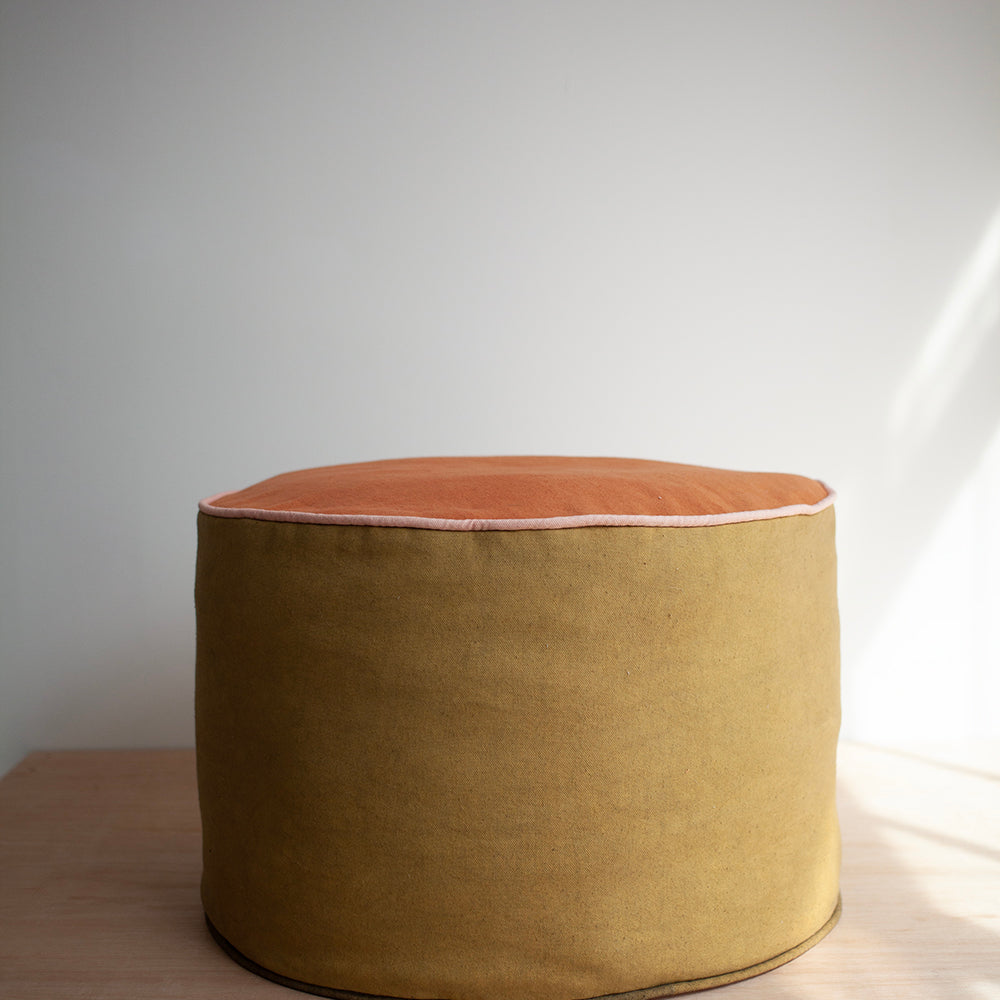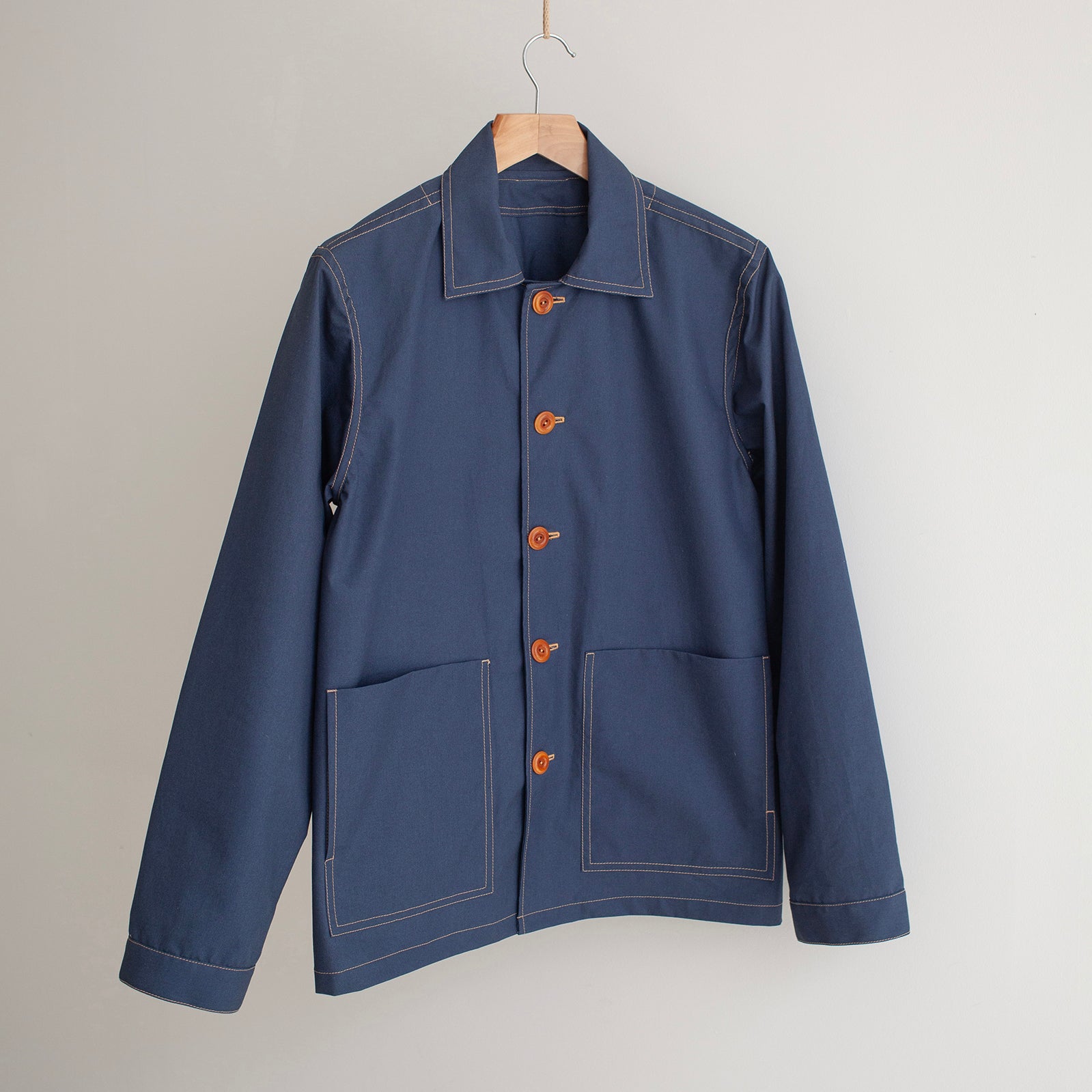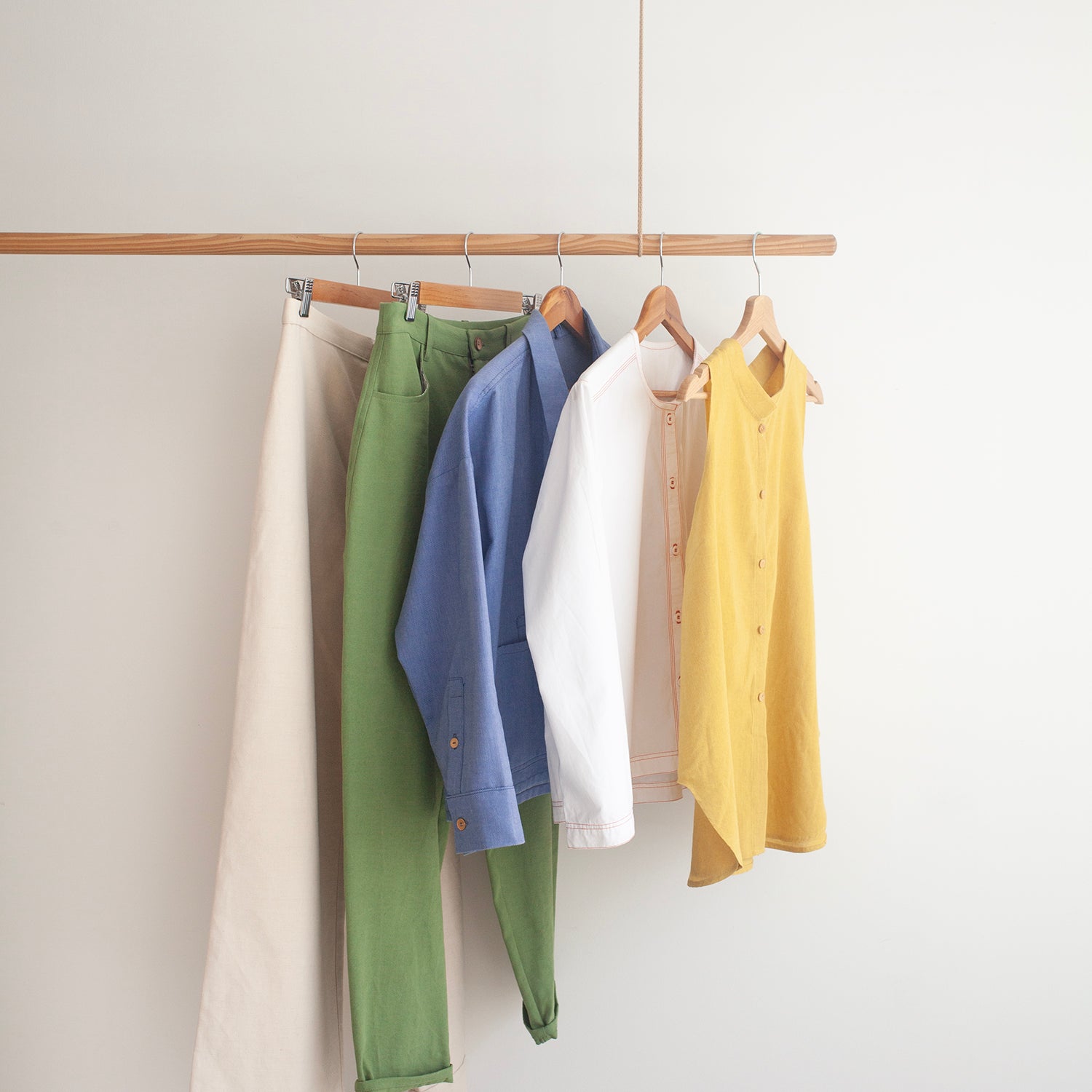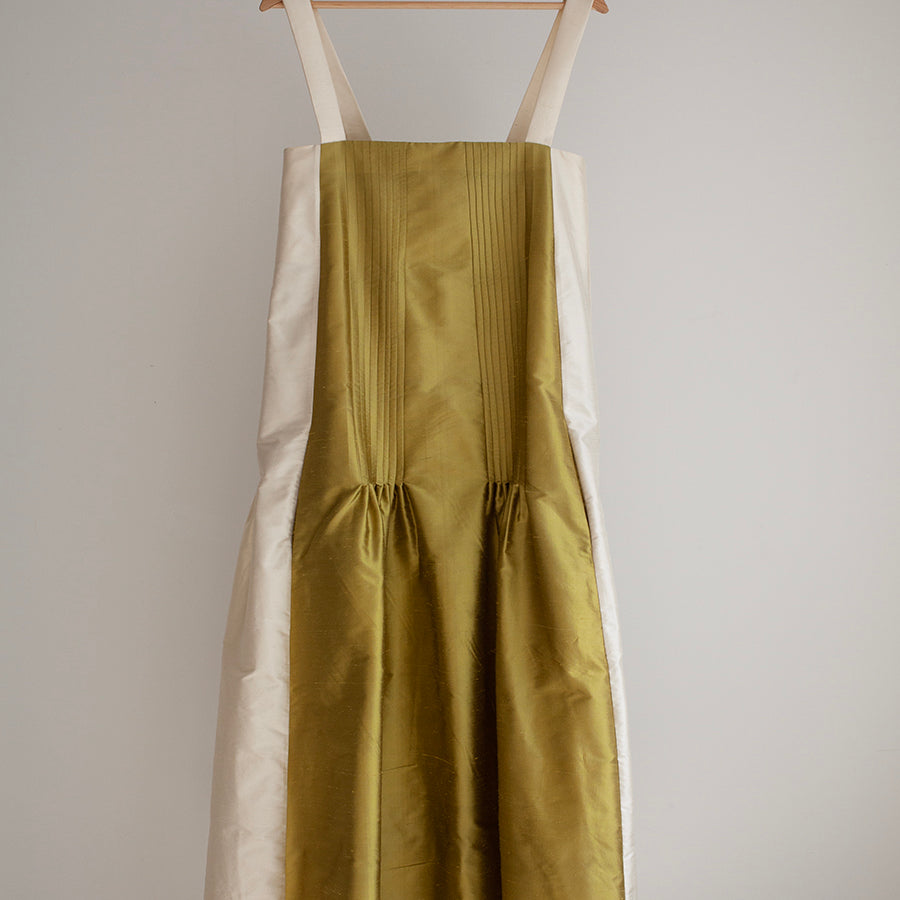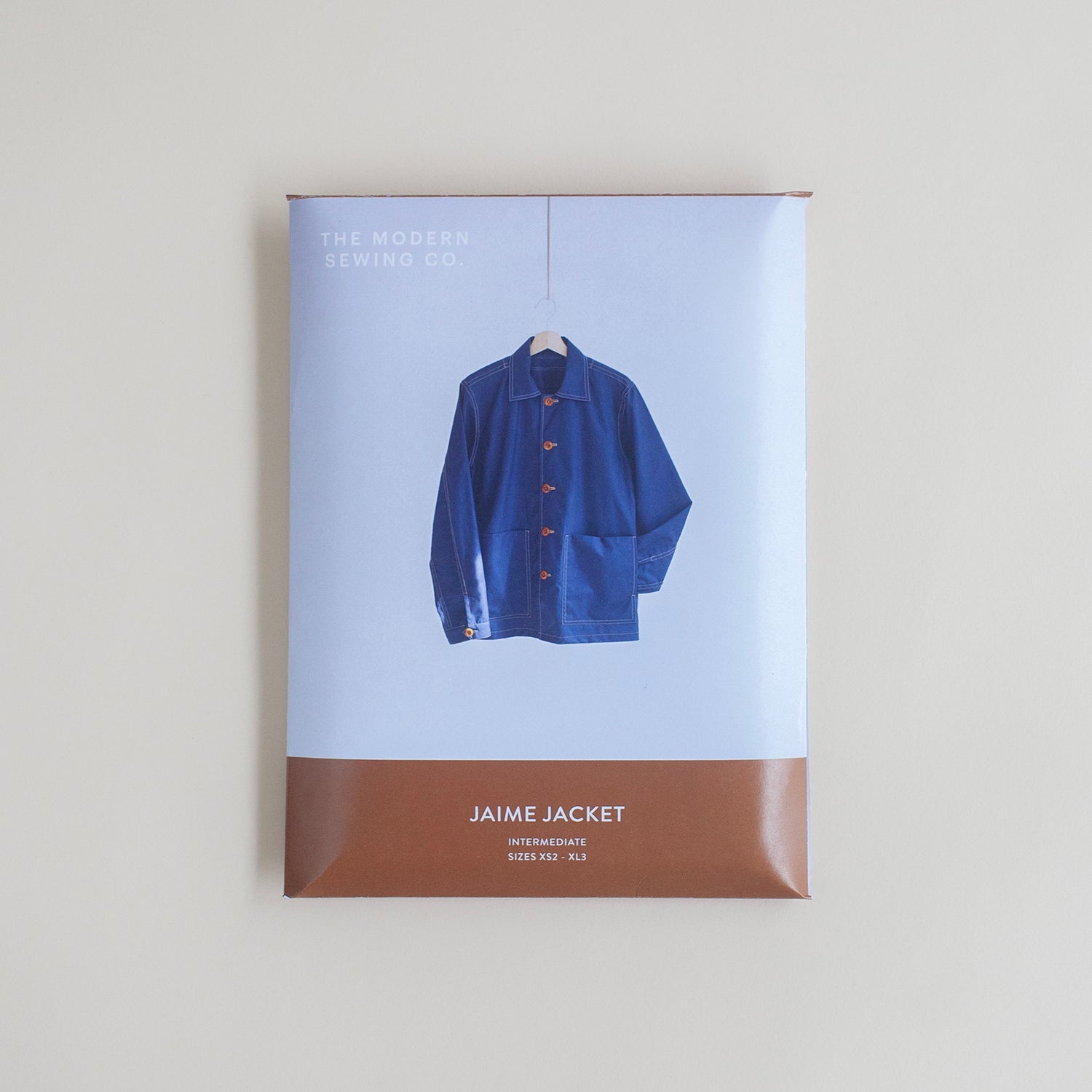
A Question of Sustainability
The weekend long read
-
In our newsletter on Monday I discussed the topic of climate change and opened up the discussion around sustainability and home sewing in our stories. The thoughts and comments that came in were super interesting and it’s obviously a subject everyone is REALLY interested in which is amazing.
Most of you won’t know that before starting the Modern Sewing Co. I ran a sustainable fashion brand called Henri London. I started this business in 2016 when the words sustainable and fashion were rarely seen together. As I was starting that business I researched into sustainability and what it meant in the context of fashion. I researched online, went to trade shows, seminars, workshops and talked to anyone with a link to fashion, textiles and even farming.
Due to a chance meeting with a sustainability and handloom guru I ended up discovering the world of Indian hand weaving and this is the road that my business took. I visited my suppliers in India where I travelled to cotton fields, spoke to cotton farmers, visited processing units, handloom villages, natural dyeing facilities and small tailoring studios. This whole experience was enlightening and taught me so much about trying to be sustainable within the fashion industry and just how complex and difficult it is.
The pandemic brought a huge shift in my work life and lead me to focus on the home sewing world while winding down Henri London. This essentially meant that I was stepping away from managing global supply chains to focusing only on what I can do with my two hands. A handful of responses I had on Monday seemed to reluctantly doubt whether home sewing is actually more sustainable giving that it’s only garment manufacturing that we’re removing from the process. I can say without a shadow of a doubt that yes, it is more sustainable.
I thought I’d share a few further thoughts on the topic. The points in this email are my own opinions of what I’ve learnt from 11 years of studying and working in the fashion industry. I’ve found that discussions around sustainability often throw up more questions than we have answers for so if you’re interested in this area I’ve added some recommended reading at the bottom of this email.
-
All photography is my own from my two trips to India. These images aren't necessarily related to home sewing but they give a glimpse into what a sustainable fashion supply chain might look like so I thought they've be interesting to share.





Consumption
After my email on Monday I was surprised by the response of people worrying that a fast fashion mindset is trickling into home sewing. This is everything that home sewing is not about and I think this is instead a problem with influencer culture and instagram.
I think that sewing your own clothes is a slow and creative process that requires time, energy and a lot of thought. This should lead to slower consumption rate as it’s not physically possible to sew lots and lots of high quality garments.
By sewing our own clothes we not only build more of an appreciation for our clothes but we can also lengthen the lifespan of a garment more easily by repairing and adjusting over the years.
If sewing influencers are making lots of items very quickly, it doesn’t mean you need to too. I’m not really familiar with this world but it’s probably their job to show different designs and patterns. If you feel pressured to sew lots of things that you don’t need, unfollow them! I don’t think this needs to be a reflection on home sewing.


Learning
Another thing that came up a lot in the comments were people who were worried about waste when their projects don't work out and aren't wearable.
If you’re keen to make high quality, durable garments you have 2 options: you can teach yourself or you can learn from someone skilled. I highly recommend the latter, whether it’s an in person class, an online workshop or being taught by someone you know. It will hugely reduce the amount of time you need to spend learning and it will also save a lot of fabric used on practice projects.
By learning how to make clothes to a high standard you’ll get years more wear and you’ll also be able to make something that fits you properly. Quality is key when it comes to making clothes and that does take time and probably an upfront investment. One way to think of it is like driving lessons - a cost that quickly pays off.


Choosing Fabric
The textile industry is colossal, is starts with agriculture and spans a multitude of process. The sustainable changes that need to happen are on a mass scale and that’s not something we (as home sewers) have control over.
We have a few options available to us and I think it’s about choosing what works for us individually and not to overcomplicate things. In my view the options are:
- Try to find a sustainable fabric i.e. something that is recycled or organic
- Find a fabric store that specialises in deadstock fabric (this is essentially waste fabric from the fashion industry)
- Up-cycle old fabric from charity shops/vintage fairs if that option is available
- If all else fails I think it’s great to just support your local fabric shop. Hemp, linen and wool are probably the most sustainable fabrics to choose if they don’t have anything specifically ‘green’.


Fabric Off-cuts
Whether it’s off-cuts or garments that haven’t gone to plan there are a few things you can do with waste fabric:
- use it for patchwork pieces
- use it for stuffing for cushions, footstools, yoga bolsters, kids toys
- donate to a local kids club for collaging activities
- if you can find a fabric recycling point near you then you can send them there


Supply Chain
There seemed to be some doubt over how much impact you’re actually having by sewing your own clothes. Some people were questioning that we’re only removing one part of the supply chain: the garment manufacturing.
But sewing your own clothes removes SO MUCH from the process. It’s an enormous and often global system so I thought I’d list the things you’re saving on in this area.
Environmental impact once the fabric is delivered to a factory:
- energy to run a whole factory
- fabric off-cuts from the garment will most likely go to landfill
- the energy of those factory employees travelling to work
- shipping of trims (threads, buttons, zips etc) from all over the world to the factory
- shipping of the final finished garment to a warehouse (by van and then either by plane or ship and then van again) and then shipping the garment from the warehouse to the store (by van)
- the energy of running the clothing store
- the energy of the store employees travelling to work
- while we’re here, the energy of running the entire clothing brand (likely to have at least one large office)
- design development of the garment as most companies release between 4-24 collections a year so styles are quickly archived
- all excess packaging that the garment might come in - it will have separate plastic packaging from being shipped from the factory and then it will be put into a mailing bag or a store bag. You also save on swing tags and labels.
- shipping and returns once the garment has been purchased or the energy it takes for you to travel to the store
- returns at some companies will then end up in landfill as it’s not worth the cost and effort to iron the garment and re-package it up
Sewing at home in comparison - environmental impact once the fabric is delivered to your house:
- the energy for your sewing machine and iron
- printing your pattern (if it's new)


Reading List
I’ve read most of these books and they’re absolutely brilliant.
Safia Minney - Slow Fashion: Aesthetics Meets Ethics
Safia Minney - Naked Fashion: The New Sustainble Fashion Revolution
Lucy Siegle - To Die For
Claire Press - Wardrobe Crisis
Kassia St Clair - The Golden Thread: How Fabric Changed History
-
If you’re interested to read about my Indian fabric sourcing here is an article I wrote for Pebble Magazine - Can heritage cotton save the fashion industry?


For me home sewing comes down to two things. Beautiful fabric and a great pattern.
By choosing a fabric you love you'll be excited to wear the end result. And by choosing a great, timeless pattern and sewing it to a high standard you'll finish with something that should last for many years.
Making your own clothes is about enjoyment, taking time for yourself and having a creative outlet that gives you something functional. The process should be as enjoyable as wearing the end result. It's a skill and an art form and a hobby to be proud of. And yes, it's more sustainable that shopping on the high street.
If you're completely new to sewing and looking for ways to get started you can check out our 5 Step Beginners Guide for tips. If you're relatively new to sewing and you've got big ambitions I would recommend our Wardrobe Workshop which will teach you how to sew 5 garments to a designer standard.
I hope this was a useful read, I'd be interested to hear any comments and thoughts you might have.
Happy Sunday!
Hetty x


